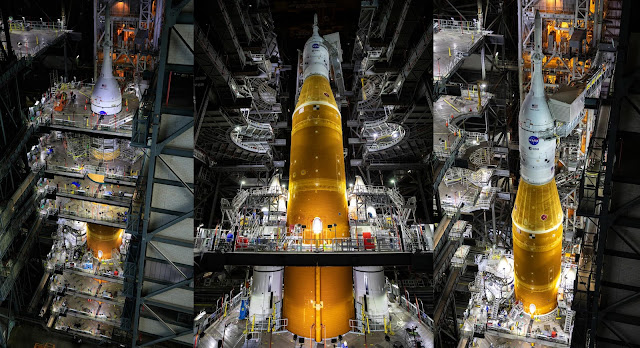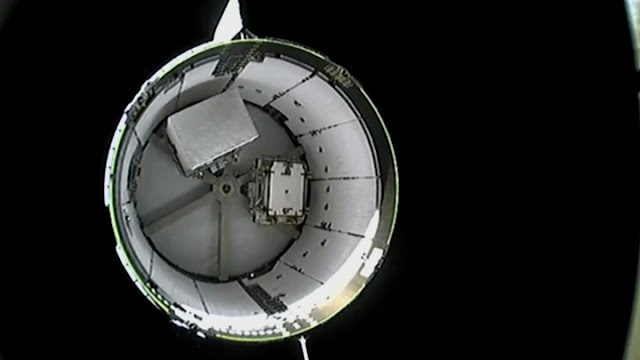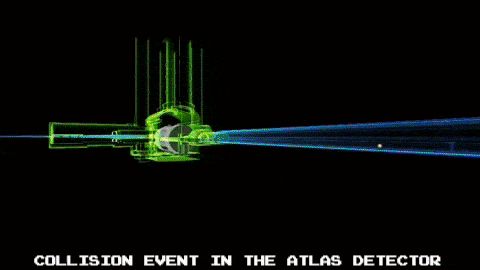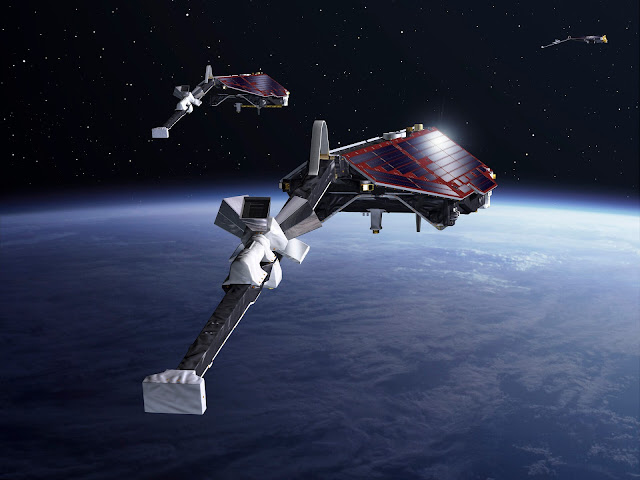SpaceX - Dragon CRS-25 Mission patch.
July 16, 2022
Image above: The SpaceX Dragon resupply ship approaches the space station during an orbital sunrise above the Pacific Ocean. Image Credit: NASA TV.
While the International Space Station was traveling more than 267 miles over the South Atlantic Ocean, the SpaceX Dragon cargo spacecraft autonomously docked to the forward-facing port of the station’s Harmony module at 11:21 a.m. EDT today, with NASA astronauts Bob Hines and Jessica Watkins monitoring operations from the station.
SpaceX CRS-25 Dragon docking
The Dragon launched on SpaceX’s 25th contracted commercial resupply mission for NASA at 8:44 p.m., Thursday, July 14, from Launch Complex 39A at the agency’s Kennedy Space Center in Florida. After Dragon spends about one month attached to the space station, the spacecraft will return to Earth with cargo and research.
Image above: SpaceX CRS-25 Dragon docked at ISS. Image Credits: NASA TV/Orbiter.ch Aerospace/Roland Berga.
Among the science experiments Dragon is delivering to the space station are:
Mapping Earth’s Dust
The Earth Surface Mineral Dust Source Investigation (EMIT), developed by NASA’s Jet Propulsion Laboratory in Southern California, employs NASA imaging spectroscopy technology to measure the mineral composition of dust in Earth’s arid regions. Mineral dust blown into the air can travel significant distances and affect Earth’s climate, weather, vegetation, and more. For example, dust containing dark minerals that absorb sunlight can warm an area, while light-colored mineral dust can cool it. Blowing dust also affects air quality, surface conditions such as rate of snow melt, and phytoplankton health in the ocean. The investigation collects images for one year to generate maps of the mineral composition in the regions on Earth that produce dust. Such mapping could advance our understanding of the effects of mineral dust on human populations now and in the future.
Speedier Immune System Aging
Aging is associated with changes in the immune response known as immunosenescence. Microgravity causes changes in human immune cells that resemble this condition, but happen faster than the actual process of aging on Earth. The Immunosenescence investigation, sponsored the by International Space Station U.S. National Laboratory, uses tissue chips to study how microgravity affects immune function during flight and whether immune cells recover post-flight. Tissue chips are small devices that contain human cells in a 3D structure, allowing scientists to test how those cells respond to stresses, drugs, and genetic changes.
Soil in Space
On Earth, complex communities of microorganisms carry out key functions in soil, including cycling of carbon and other nutrients and supporting plant growth. Dynamics of Microbiomes in Space sponsored by NASA’s Division of Biological and Physical Sciences, examines how microgravity affects metabolic interactions in communities of soil microbes. This research focuses on microbe communities that decompose chitin, a natural carbon polymer on Earth.
High School Student Weather Study
BeaverCube is an education mission that will teach high school students aerospace science by having them design a CubeSat. BeaverCube will host one visible and two infrared imagers to measure cloud properties, ocean surface temperatures, and ocean color to study Earth’s climate and weather systems. It also will demonstrate an application for the use of shape memory alloy technology via an in-orbit calibration technique.
Genes, No Cells
Cell-free technology is a platform for producing protein without specialized equipment of living cells that need to be cultured. Genes in Space-9, sponsored by the National Lab, demonstrates cell-free production of protein in microgravity and evaluates two cell-free biosensors that can detect specific target molecules. This technology could provide a simple, portable, and low-cost tool for medical diagnostics, on-demand production of medicine and vaccines, and environmental monitoring on future space missions.
Better Concrete
Biopolymer Research for In-Situ Capabilities looks at how microgravity affects the process of creating a concrete alternative made with an organic material and on-site materials, such as lunar or Martian dust, known as a biopolymer soil composite. Using resources available where construction takes place makes it possible to increase the amount of shielding.
These are just a few of the hundreds of investigations currently being conducted aboard the orbiting laboratory in the areas of biology and biotechnology, physical sciences, and Earth and space science. Advances in these areas will help keep astronauts healthy during long-duration space travel and demonstrate technologies for future human and robotic exploration beyond low-Earth orbit to the Moon and Mars through NASA’s Artemis program.
Related articles:
We Have Liftoff! Dragon cargo CRS-25 en route to ISS
https://orbiterchspacenews.blogspot.com/2022/07/we-have-liftoff-dragon-cargo-crs-25-en.html
Launch Day Arrives for SpaceX’s 25th Resupply Services Mission
https://orbiterchspacenews.blogspot.com/2022/07/launch-day-arrives-for-spacexs-25th.html
NASA’s New Mineral Dust Detector on ISS
https://orbiterchspacenews.blogspot.com/2022/07/nasas-new-mineral-dust-detector-on-iss.html
Soil, Sutures, and Climate Modeling Among Investigations Riding SpaceX CRS-25 Dragon to International Space Station
https://orbiterchspacenews.blogspot.com/2022/05/soil-sutures-and-climate-modeling-among.html
Related links:
Earth Surface Mineral Dust Source Investigation (EMIT): https://www.nasa.gov/feature/jpl/nasa-s-emit-will-map-tiny-dust-particles-to-study-big-climate-impacts
Immunosenescence investigation: https://www.nasa.gov/mission_pages/station/research/experiments/explorer/Investigation.html?#id=8343
Tissue chips: https://www.nasa.gov/tissue-chips
Dynamics of Microbiomes in Space: https://www.nasa.gov/mission_pages/station/research/experiments/explorer/Investigation.html?#id=8731
BeaverCube: https://www.nasa.gov/mission_pages/station/research/experiments/explorer/Investigation.html?#id=8180
Genes in Space-9: https://www.nasa.gov/mission_pages/station/research/experiments/explorer/Investigation.html?#id=8703
Biopolymer Research for In-Situ Capabilities: https://www.nasa.gov/mission_pages/station/research/experiments/explorer/Investigation.html?#id=8634
NASA’s Artemis program: https://www.nasa.gov/specials/artemis/
SpaceX: https://www.spacex.com/
International Space Station (ISS): https://www.nasa.gov/mission_pages/station/main/index.html
Images (mentioned), Video, Text, Credits: NASA/Mark Garcia/SciNews/Orbiter.ch Aerospace/Roland Berga.
Best regards, Orbiter.ch










.jpg)



































